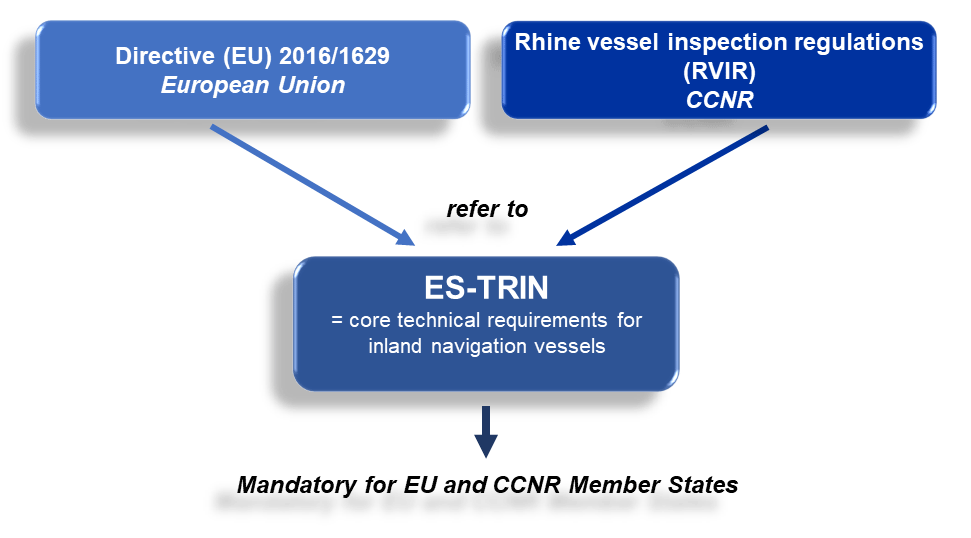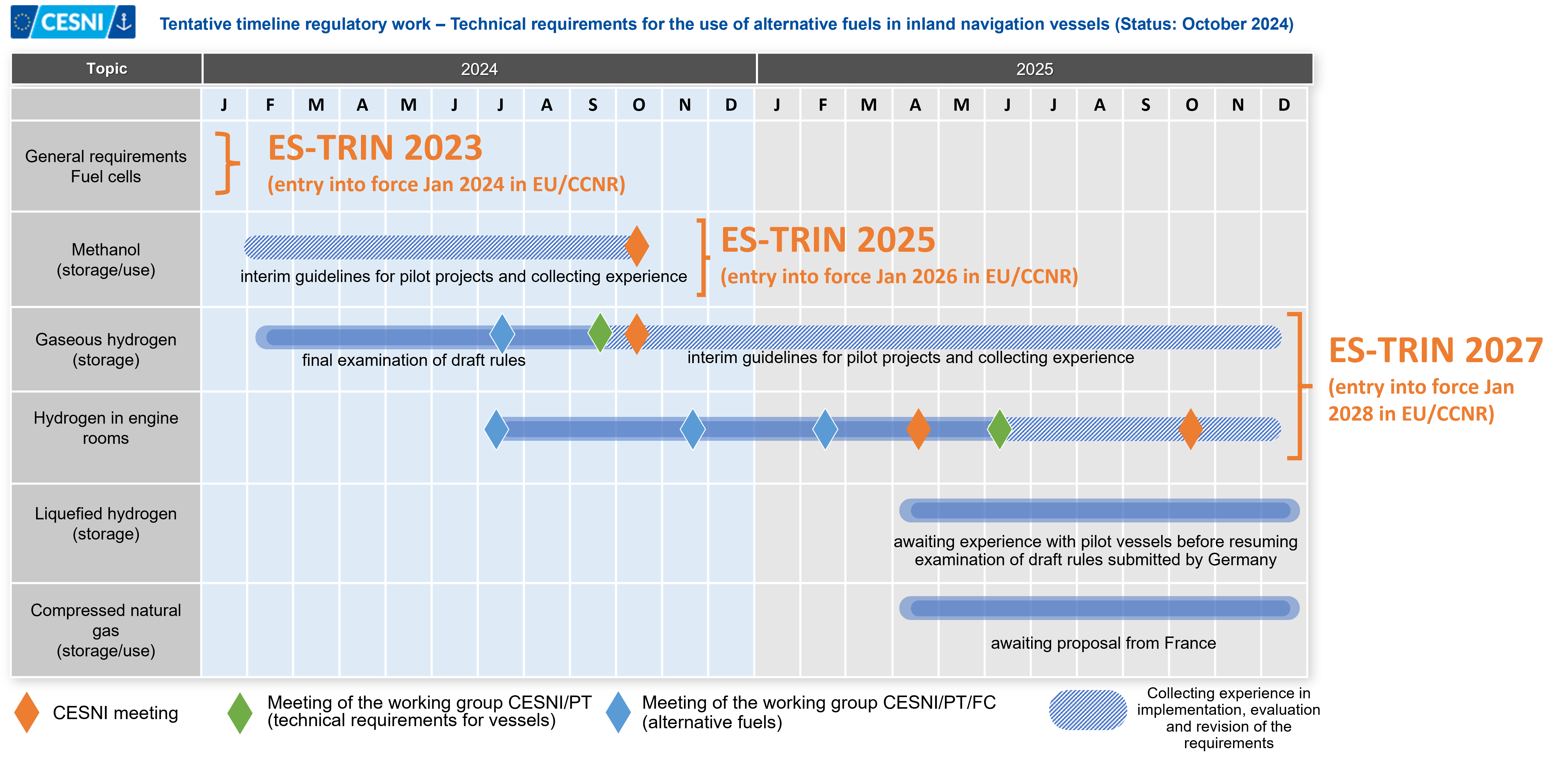Related pages
Technical requirements (PT)
- ES-TRIN and inland navigation vessel certificates
- Database for the application of the technical requirements
- List of authorities, inspection bodies, installatoin firms, installations and equipments approved under the ES-TRIN
- Working groups in the field of technical requirements
- Documents and frequently asked questions (FAQ)
ES-TRIN and inland navigation vessel certificates
Since 2015, the CESNI regularly updates and publishes the European Standard laying down Technical Requirements for Inland Navigation vessels (ES-TRIN). This standard lays down the uniform technical requirements necessary to ensure the safety of inland navigation vessels. It contains provisions on inland navigation vessel construction and equipment, special provisions for certain categories of vessels such as passenger and container vessels, provisions on the model of inland navigation vessel certificate as well as instructions on how to apply the technical standard. It is available in four languages (German, English, French, Dutch). The ES-TRIN 2015 brought together in a standardised way the requirements previously contained in directive 2006/87/EC and in the Rhine vessel inspection regulations. Subsequent editions of the ES-TRIN have enabled this standard to develop to take account of technical developments and feedback on its application.
References to ES-TRIN are now included in the legal frameworks of the EU and the CCNR (respectively directive (EU) 2016/1629 and Rhine vessel inspection regulations). The Danube Commission also decided in 2017 to recommend the standard in its international instruments. In 2023, all the riparian states of the Danube should have implemented the ES-TRIN in their national law. Moreover, the International Sava River Basin Commission intends to create a reference to the standard in its legal framework. In other words, ES-TRIN has been established, with great effort, as the centrepiece and baseline for the technical requirements for inland navigation vessels in Europe and has contributed to the reinforcement of governance and harmonisation at the European level.

As a reminder, a vessel operating on EU waterways or Rhine must carry either a Union inland navigation certificate or a Rhine vessel inspection certificate. Both certificates are issued by the competent national authorities (inspection bodies) and confirm the full compliance of the vessel with the technical requirements (in particular ES-TRIN). Once again, the objective of these technical requirements is to guarantee a high level of safety in inland navigation, thereby also protecting the environment and the people on board, and supporting the sector’s energy transition.
Database for the application of the technical requirements
The database contains questions, comments and interpretations for which the Working Group Technical Requirements (CESNI/PT) has given a coordinated response or conclusion. This data results from the actual application of the technical requirements of the ES-TRIN (or earlier texts).
The database can be accessed by clicking on the following link: https://estrin-faq.cesni.eu
Lists of authorities, Inspection bodies, installation firms, installations and equipment approved under the ES-TRIN
The ES-TRIN contains provisions on the approval of installations and equipment, as well as installation firms and technical services. Such approvals are the responsibility of the national authorities under the ES-TRIN and associated regulatory framework (i.e. RVIR or Directive (EU) 2016/1629).
The CESNI updates the lists of approved apparatus and equipment, authorities, Inspection bodies responsible for issuing inland navigation vessels certificates, installing companies, and technical services.
The lists can be accessed by clicking on the following link: https://listes.cesni.eu
Working groups in the field of technical requirements
In 2015, the CESNI set up the Working Group on technical requirements (CESNI/PT). As directed by the Committee, the primary responsibility of this permanent CESNI Working group is:
-
to draw up proposed technical standards in the field of technical requirements for inland waterway vessels;
-
to prepare deliberations on the uniform interpretation and application of the said standards, on the method for applying and implementing the corresponding procedures, on procedures for exchanging information, and on the supervisory mechanisms among the Member States;
-
to prepare deliberations on priority topics regarding safety of navigation, protection of the environment, and other areas of inland navigation;
-
to prepare deliberations on derogations and equivalences of technical requirements for a specific craft.
In light of the CESNI’s work programme, several temporary working groups attached to this permanent working group have been set up to carry out preparatory work.
Temporary Working group for alternative fuels (CESNI/PT/FC)
It has been tasked with preparing draft technical requirements for the use of alternative fuels aboard inland navigation vessels, including the bunkering, storage, distribution and processing of suitable primary fuels. The mission does not include developing requirements for vessel operation or crew training. It shall follow the priorities set out in the work programme: 1) storage of methanol, 2) storage of hydrogen (liquified and gaseous), 3) methanol in internal combustion engines, 4) storage and use of compressed natural gas, 5) other alternative fuels. The indicative timetable for its work is to be found below:
Temporary Working group on electronic equipment and systems on board of vessels (CESNI/PT/Elec)
Its principal missions shall be to finalise the draft technical requirements for electronic equipment and systems (Chapter 12 of ES-TRIN) and to assess the impact of these technical requirements.
Temporary Working group on the transitional provisions (CESNI/PT/DT)
Its task is to prepare the revision of the transitional provisions laid down in Chapters 32 and 33 of ES-TRIN, as well as the associated regulatory frameworks, in view to simplify the application of ES-TRIN to existing vessels (for instance presentation of all transitional provisions in a single table).
Temporary Working group on the new model of vessel certificate (CESNI/PT/MOD)
The CESNI work programme provides for the drawing up of a new inland navigation vessel model certificate (Annex 3 of the ES-TRIN), and for revision of the corresponding service instruction (ESI). In the light of the preparatory work and the principles approved in 2020-2021, the CESNI/PT/MOD temporary Working group has been tasked with:
-
reviewing data fields to be included in the new model of certificate;
-
preparing a proposal for a new model of certificate (data fields and formatting);
-
organising a workshop in view to seek the opinion of other stakeholders such as the profession and river polices, identify possible adaptations and ease acceptance of the new model of certificate.


